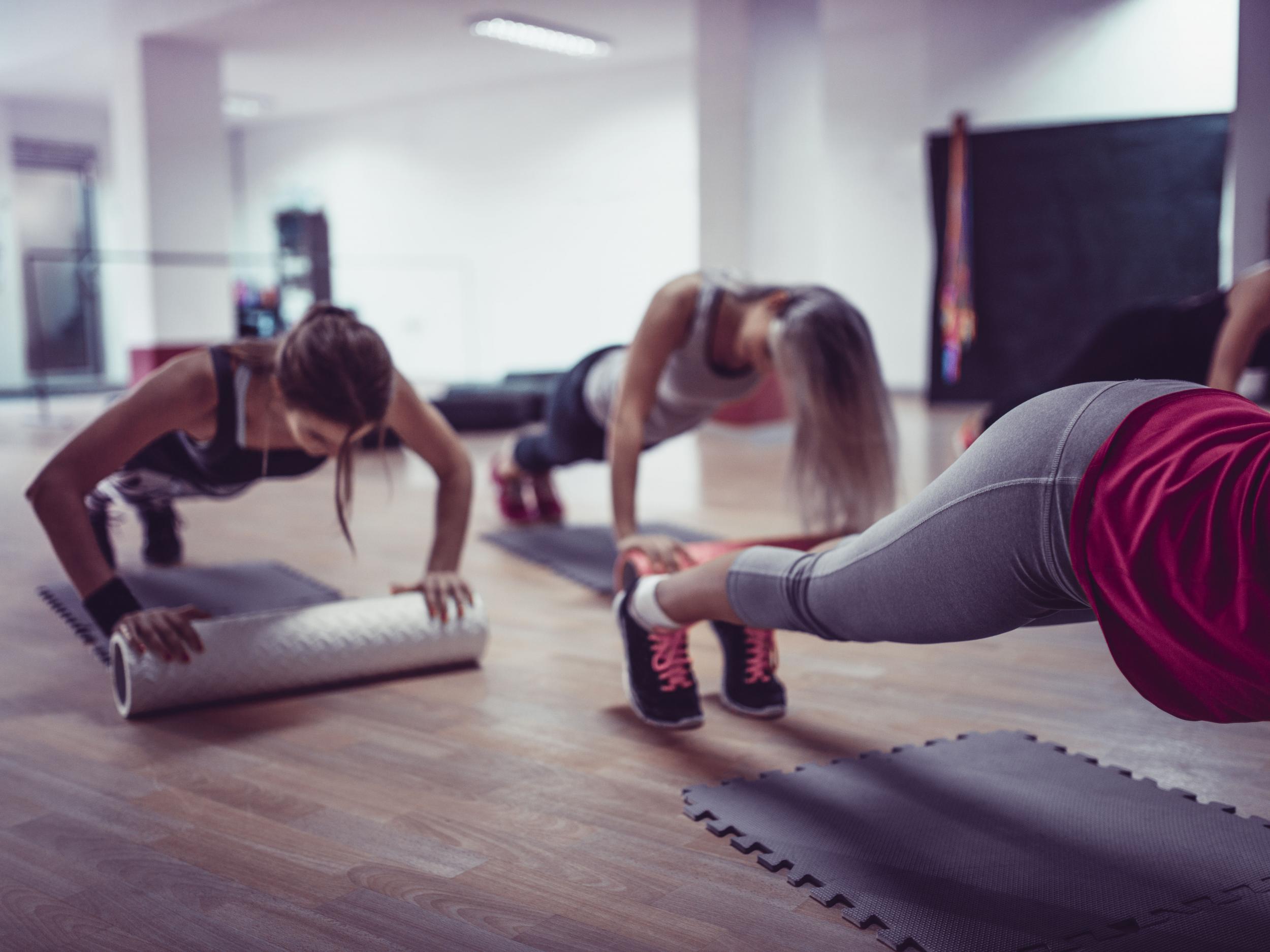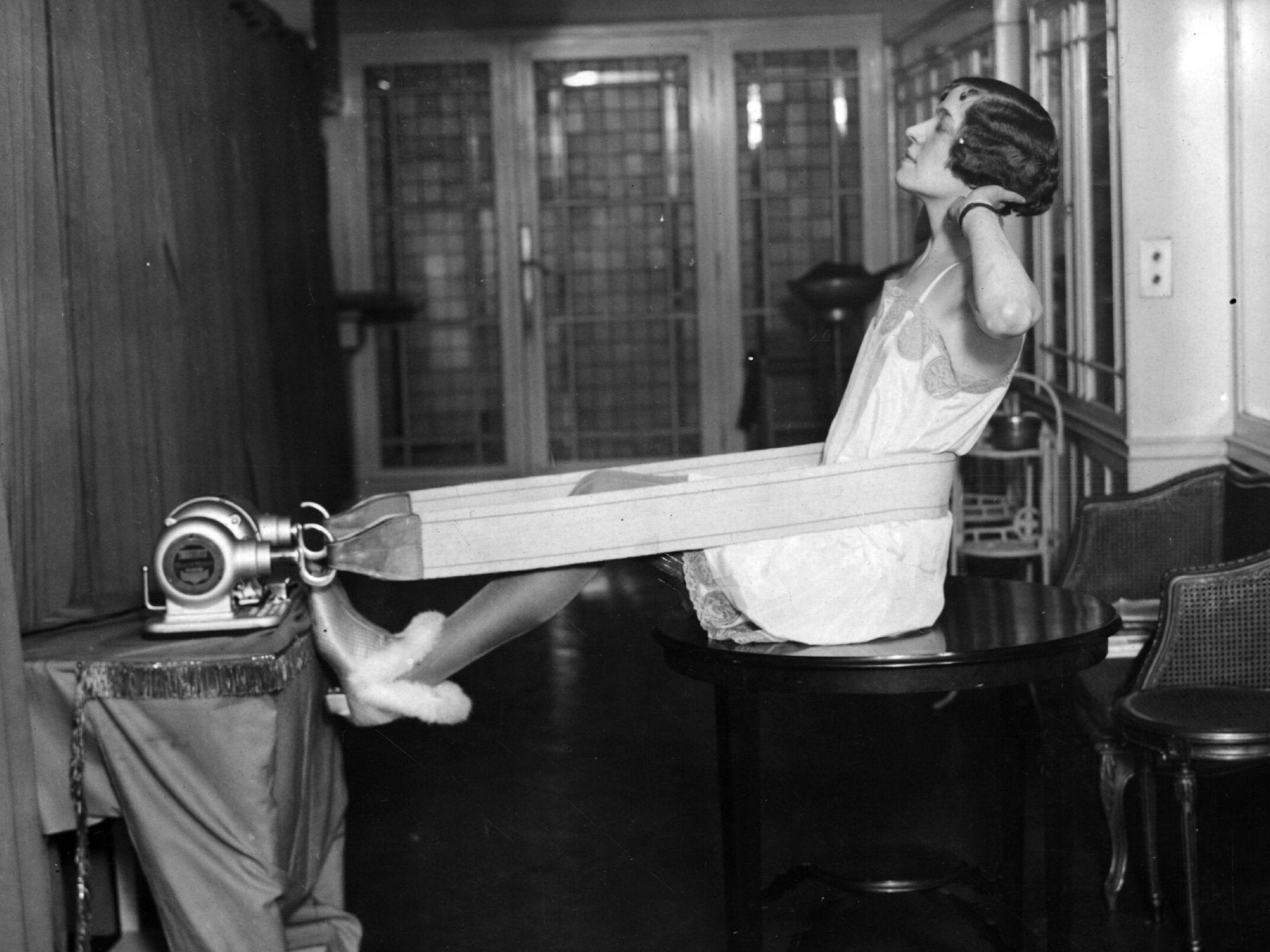Could a wellness gadget really be the secret to happiness?
On her latest foray into the world of wellness, Christine Manby tries pilates classes and the latest gadget

Dear readers, I have found the wellness gadget of the year and it costs just £24.99. It’s a Crane vibrating massage foam roller and you can find it at Aldi. Hurry now while stocks last. The website describes it thus: “your perfect post-workout partner”. I’d go further than that. I’d describe it as the secret to happiness. At least for this week.
I had no idea such things even existed until last Friday at a Trigger Point Pilates class at London’s PI Studios. Trigger Point Pilates is a combination of Pilates and “Myofascial Release”, in which sustained pressure on the fascia, the connective tissue which wraps our muscles, helps to improve circulation and increase mobility. As we students lay flat out at the end of a particularly painful workout, instructor Kiki Lier Laursen did a circuit of the room, placing the vibrating rollers behind our knees. It was impossible not to laugh as we lay there and jiggled.
Many Pilates exercises seem like the instructor just made them up for a giggle. In “The Seal”, for example, you roll backwards and forwards like a demented egg while clapping your feet together. “Swimming” involves laying face down on a mat and pretending to snorkel. “The Reluctant Owl” involves gently flapping your elbows while pulling a silent hooting face… OK. I did make that last one up. But it’s hard to imagine at first sight how many of the exercises German prisoner of war Joseph Pilates developed in a WW1 internment camp on the Isle of Man are improving your fitness. The Seal definitely seems like something you’d come up with to amuse your cellmates after several weeks of confinement. Likewise when Kiki brought out the vibrating rollers, I wondered where the hidden cameras were. I was sure there could be no actual fitness benefit to all the shaking except though it would make an amusing clip for YouTube.
There’s nothing the British can’t turn into a slightly smutty joke and vibrating exercise equipment has been a comedy staple since the 1930s when it first became fashionable to jiggle your wobbly bits away on a vibrating belt machine. The concept is actually much older than that. Swedish doctor Gustav Zander designed the earliest known vibrating belt in the 1850s.
A century later, in the 1950s, vibrating belts were big business. The theory was that shaking your flab helped break it down so that it could be flushed out of your body along with your urine and sweat. The machines’ USP was that remarkable weight-loss results could be achieved with zero effort. Just wrap the belt around your troublesome saggy spots – your waist, your thighs, your bingo wings –turn the motor on and let the shaking do the hard part while you watch the soaps.
The only problem was, those vibrating belts didn’t work and an awful lot ended up gathering dust in spare bedrooms all over the world. That hasn’t stopped the concept from sporadically reappearing throughout the decades, though not with any greater effect. In 2003, the manufacturers of Fast Abs, AbTronic and Ab Energizer, three machines that promised weight loss and toning results with no effort on the part of the jiggled were sued for false advertising claims and had to pay $5 million in damages. So alas it seems you can’t just stand there and be shaken into shape. But does that mean there’s no benefit to vibration-based exercise at all?
There has been a great deal of research into the effects of vibration on the human body. Not least because whole body vibration caused by industrial machinery has been implicated in health issues such as back pain and headaches for the people who operate it. The government’s health and safety website advises reducing exposure to vibration wherever possible, particularly where large jolts are involved – such as when driving over potholes or operating a jackhammer.

However, whole body vibration at a steady, gentler rate, which is to say at a high frequency but over a much lower amplitude than you get from a pneumatic drill, may be good for us. It seems the inventor of the vibrating belt wasn’t entirely wrong when he suggested that it could melt away fat. It certainly appears to boost metabolism in mice.
Meghan McGee-Lawrence, Associate Professor Cellular Biology and Anatomy, and her colleagues at the Medical College of Georgia in Augusta compared the results of traditional exercise with whole-body vibration in a 12 week long study. Their test subjects were mice, specially bred to be resistant to leptin, the hormone that controls appetite. Leptin resistance causes obesity and diabetes. McGee-Lawrence and her team took their artificially obese mice and divided them into three groups. The control group were given no exercise regime at all. They were free to loll about doing their mousey thing. A second group spent 45 minutes per day on a treadmill. The final group lived in specially adapted cages that vibrated at a steady rate for 20 minutes a day.
At the end of the study, it was found that the mice living in the vibrating cages showed health improvements close to those achieved by the mice that had actively exercised on the treadmill. They showed similar increases in muscle mass and reduced insulin levels. McGee Lawrence explained, “Our study is the first to show that whole-body vibration may be just as effective as exercise at combating some of the negative consequences of obesity and diabetes …” Great news! Though she followed that up by saying, “If you are able to exercise, we’d still recommend exercise as a first-choice option. [But for people who find it difficult to work out in a traditional way], our study suggests it may be possible to obtain some of the same beneficial effects of exercise in a … less strenuous way.”
In 2018, a team from the Taipei Medical University led by Shu-Fang Chang tested the hypothesis on human subjects. They put a group of older people with sarcopenia – degenerative loss of skeletal muscle mass as a result of ageing – through a training programme based on whole body vibration. The programme lasted for three months, during which time the subjects trained three times a week on something akin to those Power Plate machines that were huge in the noughties. The results were even more encouraging that those seen on the obese mice, with the subjects experiencing measurable improvements in physical fitness and quality of life. So it seems that whatever your favourite exercise regime, it might be worth shaking it up.
Back to the Pilates studio and my vibrating foam roller. Foam rollers are invaluable when it comes to self-myofascial release (stop sniggering at the back), which is widely practised by athletes all over the world. Before a workout, adding vibration helps to increase circulation and warm our muscles up. Afterwards, it helps disperse muscle tension more quickly than the usual pressure point exercises, reducing soreness and stiffness and helping to avoid injury.
Whether it’s really doing any good or not, my vibrating foam roller feels good which encourages me to do the hard exercise I know does work. Even if it’s a placebo effect, that’s worth £24.99. It’s certainly cheaper than forking out for a massage. And when I do get fed up of it, upended my roller will make a useful place to put a cup of tea when I’m sitting on the sofa. Vibrating function off, of course.
Join our commenting forum
Join thought-provoking conversations, follow other Independent readers and see their replies
Comments